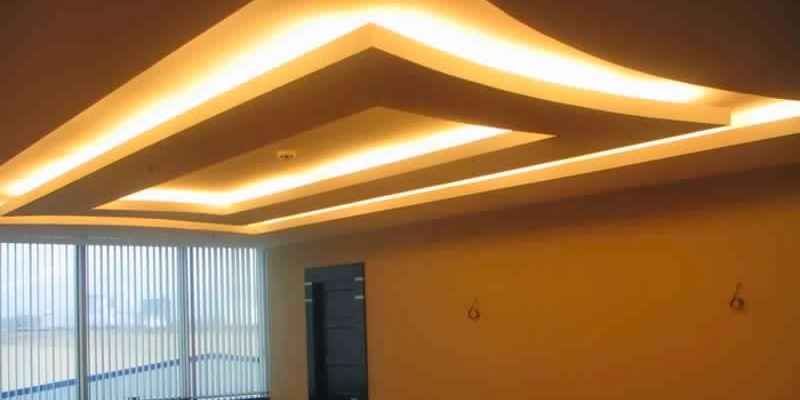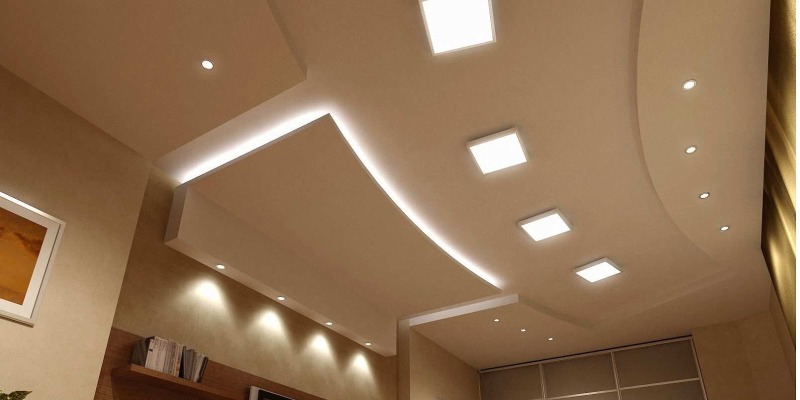Lightweight, flexible and fire and moisture resistant, gypsum is most commonly used for false ceiling. Gypsum board panels are tough, versatile and economical, and are fast replacing other ceiling materials such as POP. Gypsum board can be used while constructing false ceiling. as well as to renovate old ceilings. The material is fire-resistant, waterproof, as well as soundproof, which is why it is the most preferred material for false ceiling.
A gypsum panel could have tapered or square edges. Panels with tapered adage are used for ceiling since the gap between each edge can be filled, to give a smooth surface. Square-edges board can be used. Where visibility of the joints is a requirement. A suspended Gypsum board ceiling can be constructed by nailing Gypsum board panels to each other, or by fixing the panels in a metal grid (usually steel). Generally, gypsum panels of 600mm x 600mm are used.
Gypsum ceiling are popular because:
- The 'dry construction' eliminates the use of extra water while making the ceiling. This also keeps the building clean.
- Gypsum board is quite flexible. It allows for various shapes and design-such as plain, curved, stepped, coffered, pelmet, drop design, etc.
- Gypsum board has high impact-resistance and is very strong. It is possible to suspend a load of up to 15 kg from the ceiling without any difficulty.
- A Gyp board ceiling suspended on a metal grid forms a strong ceiling design.
- The ceiling can be easily decorated with wallpaper or paint, 24 hours after it is constructed.
- Glass fibre-reinforced gyp board makes excellent insulation material.
- Gypsum ceilings are non-resonant which makes then good soundproofing.
- When exposed to fire, gypsum gives out water, which is converted to steam and helps combat the fire. This is what makes the ceiling fireproof.


